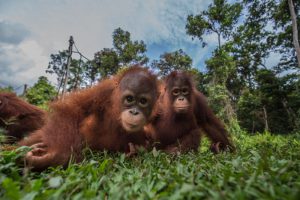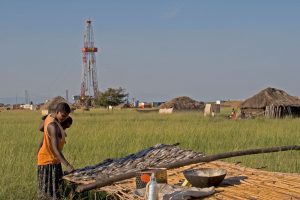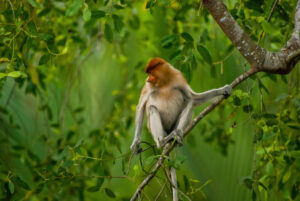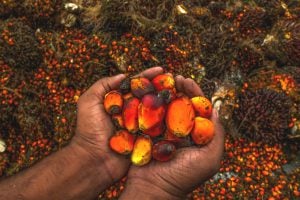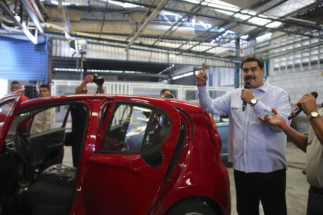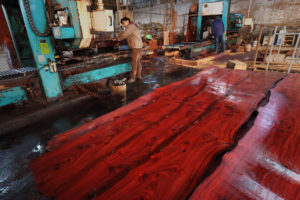Liberia’s exceptional biodiversity wealth is underreported both domestically and internationally. While researching for this short documentary, I looked into pressures on several of the country’s wildlife species, from forest elephants to pygmy hippos. I finally decided to focus on the critically endangered Western chimpanzee because of the clear threats posed to its habitat by commercial logging activities and oil palm plantations.
I was curious to see how these threats manifest themselves up-close, and to be able to contrast them visually with the chimps’ natural home in the forest. Although I live in Liberia, my base in the densely populated capital, Monrovia, is a far cry from the tropical forested wilderness of Sapo National Park – and the neighbouring swathes of plantations – in the rural southeast.
The most memorable part of the shoot was our day spent trooping through the national park with Augustine the ranger and his band of forest monitors. As I tried to remain hot on the heels of our indefatigable cinematographer, Emilie Iob, and therefore out of shot, I quickly came to appreciate the characteristics of a tropical rainforest, starting with the humidity.
Black clouds accumulated as we wrapped up the shoot and paddled across the river that marks the park’s western boundary. We still had several kilometres to walk back to Jallay Town, where Augustine and his team live, and our camp on the outskirts. Fortunately the upturned canoe held over several heads proved to be an effective protector for the video equipment as we marched home through the downpour.
As expected, we didn’t see any chimps, but the villagers gleefully told us on our bedraggled return that a family of them had been to visit while we were out recording their traces in the forest.
Chimps build their nests in trees on the outskirts of this particular village because they know that the inhabitants will not harm them. They are from the Sapo tribe and, unlike many other communities, they view chimpanzees as their ancestors and friends.
Liberia’s conservation efforts face severe challenges. For a start, there are significant resource constraints that mean the government-employed rangers, like Augustine, often suffer lengthy salary delays. Even local expertise, such as on-the-ground biodiversity specialists, is largely provided by international NGOs, who attract qualified conservationists with the promise of reliable and fair remuneration.
Then there is the broader tension between preserving the country’s natural endowments and promoting human development by granting agricultural concessions and creating much-needed jobs for Liberians. Progress with the latter has been slower than expected, with only 7% of the area allocated for oil palm concessions currently planted, due to land rights issues and international conservation guidelines deterring the clearance of “high carbon stock” forest.
But the risk of further destruction to the habitat of Liberia’s chimps nonetheless remains. Even one of the Sapo villagers told us that his community would not be able to decline a request from a palm oil company to transform their forest – and the chimps’ home – into a plantation: “There’s no money, so we’ll give them land to clear to give us money!”
Production credits:
Directed by Lucinda Rouse
Filmed by Emilie Iob
Produced by Lizi Hesling
Edited by Emilie Iob and Lizi Hesling
Colourist: Laura Hewett
Audio post production by Chris Wood
With input from Dr Josie W. Phillips
Commissioned by Jessica Aldred and Beth Walker
Additional footage provided by the Wild Chimpanzee Foundation
With thanks to Fauna & Flora International
Copyright notice
This video is released under a Creative Commons Attribution Non-Commercial licence. Should you wish to share or make use of it, please respect the terms of this licence. For a free copy please contact us: [email protected]. A clipreel of the footage is also available on request.

